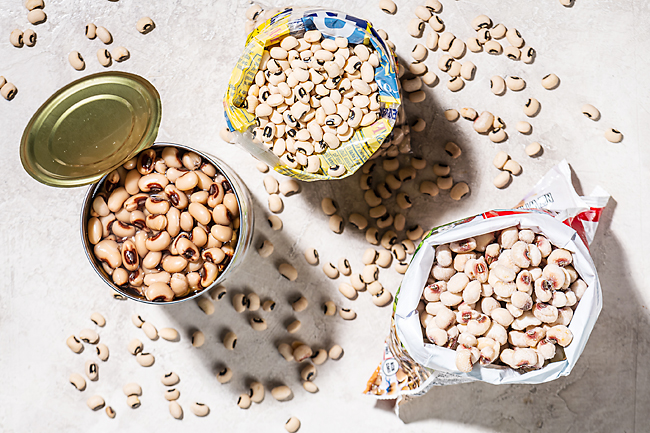Aaron Hutcherson
THE WASHINGTON POST – If search results are any indication, the first thing to pop into your head when you think of black-eyed peas might be the musical group. Though I enjoy their songs (it’s hard to resist the impulse to dance when My Humps starts playing), I’m here to talk about the legume.
The most common commercial variety is the California Blackeye – a pale beige bean with a prominent black spot – though there are also yellow-eyed and purple hull peas that can be used interchangeably with the standard colored bean in question.
A type of cowpea, “black-eyed peas are native to Africa, where they have been a popular food at least since the Middle Ages,” Adrian Miller wrote in Soul Food: The Surprising Story of an American Cuisine, One Plate at a Time.
From there they traveled around the world with the transport of people and things from the region. Black-eyed peas are believed to have reached the American South sometime during the 17th or 18th centuries, where the heat-loving, drought-tolerant crop took a foothold in the region, particularly come January 1.
“On New Year’s Day, the plebeian pea takes on magical qualities, beckoning millions of black and white southerners (and people with southern heritage) across the country with a promise: ‘Eat me, and I will bring you good fortune,’ “ Miller wrote.

Theories for the connection between black-eyed peas and luck in the new year abound, including: the timing of when enslaved African Americans were hired out or sold, and thus they hoped for good luck on this date so that they wouldn’t be separated (again) from their families; West African folklore surrounding wearing something that contains or resembles an eye as a way to provide protection against the “evil eye”; Scotland’s first-footing tradition where a dark man being the first to cross the threshold of one’s home brings luck and prosperity for the coming year; and the Emancipation Proclamation going into effect on January 1, 1863. And this is just to name a few.
No matter how this tradition came to be, many people still eat at least a spoonful of simmered beans or hoppin’ John on New Year’s Day in hopes that the superstition holds true. (And given the year we’ve had, we could use all the luck and good fortune we can get.)
But even if you don’t believe in such things, black-eyed peas are full of nutrition and fit to be enjoyed year-round.
Black-eyed peas can have an “earthy” flavor that might be an acquired taste for some, but I think that all depends on the preparation. Like any other type of bean, they are incredibly versatile.
Black-eyed peas are great in soups, stews, salads, fritters and dips, as in Texas or cowboy caviar. Canned and dried black-eyed peas are easy to come by – and great for stocking your pantry – but Edna Lewis in The Taste of Country Cooking wrote of the popularity of fresh beans in late summer and fall, which cook quicker than their dried counterparts.
When it comes to cooking black-eyed peas, bean guru Joe Yonan has you covered. (Basically, just throw them in a pot with a bunch of liquid and some aromatics and simmer until tender.) One important reminder: It’s not necessary to soak dried beans before cooking, meaning you can enjoy them for dinner tonight.
They might not change your fortune, but black-eyed peas will satisfy your stomach and soul.


